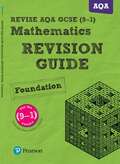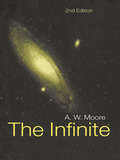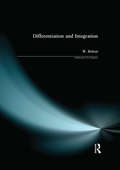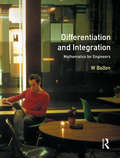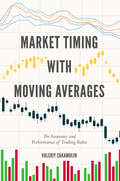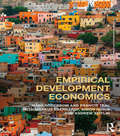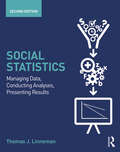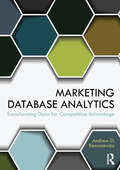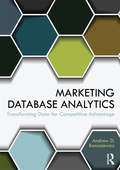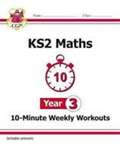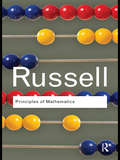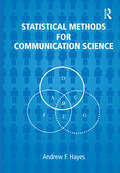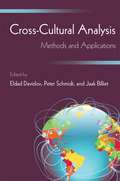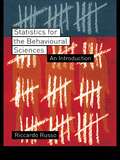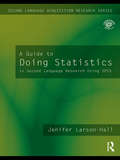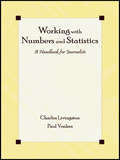- Table View
- List View
REVISE AQA GCSE Mathematics Foundation Revision Guide: for the new 2015 qualifications (REVISE AQA GCSE Maths 2015)
by Harry SmithREVISE AQA GCSE Mathematics Foundation Revision Guide - print component
The Infinite
by A. W. MooreAnyone who has pondered the limitlessness of space and time, or the endlessness of numbers, or the perfection of God will recognize the special fascination of this question. Adrian Moore's historical study of the infinite covers all its aspects, from the mathematical to the mystical.
The Infinite
by A. W. MooreAnyone who has pondered the limitlessness of space and time, or the endlessness of numbers, or the perfection of God will recognize the special fascination of this question. Adrian Moore's historical study of the infinite covers all its aspects, from the mathematical to the mystical.
Differentiation and Integration (500 Tips)
by W. BoltonThis book is concerned with the principles of differentiation and integration. The principles are then applied to solve engineering problems. A familiarity with basic algebra and a basic knowledge of common functions, such as polynomials, trigonometric, exponential, logarithmic and hyperbolic is assumed but reference material on these is included in an appendix.
Differentiation and Integration
by W. BoltonThis book is concerned with the principles of differentiation and integration. The principles are then applied to solve engineering problems. A familiarity with basic algebra and a basic knowledge of common functions, such as polynomials, trigonometric, exponential, logarithmic and hyperbolic is assumed but reference material on these is included in an appendix.
Market Timing with Moving Averages: The Anatomy and Performance of Trading Rules
by Valeriy ZakamulinThis book provides a comprehensive guide to market timing using moving averages. Part I explores the foundations of market timing rules, presenting a methodology for examining how the value of a trading indicator is computed. Using this methodology the author then applies the computation of trading indicators to a variety of market timing rules to analyse the commonalities and differences between the rules. Part II goes on to present a comprehensive analysis of the empirical performance of trading rules based on moving averages.
Market Timing with Moving Averages: The Anatomy and Performance of Trading Rules
by Valeriy ZakamulinThis book provides a comprehensive guide to market timing using moving averages. Part I explores the foundations of market timing rules, presenting a methodology for examining how the value of a trading indicator is computed. Using this methodology the author then applies the computation of trading indicators to a variety of market timing rules to analyse the commonalities and differences between the rules. Part II goes on to present a comprehensive analysis of the empirical performance of trading rules based on moving averages.
Empirical Development Economics
by Måns Söderbom Francis Teal Markus Eberhardt Simon Quinn Andrew ZeitlinUnderstanding why so many people across the world are so poor is one of the central intellectual challenges of our time. This book provides the tools and data that will enable students, researchers and professionals to address that issue. Empirical Development Economics has been designed as a hands-on teaching tool to investigate the causes of poverty. The book begins by introducing the quantitative approach to development economics. Each section uses data to illustrate key policy issues. Part One focuses on the basics of understanding the role of education, technology and institutions in determining why incomes differ so much across individuals and countries. In Part Two, the focus is on techniques to address a number of topics in development, including how firms invest, how households decide how much to spend on their children’s education, whether microcredit helps the poor, whether food aid works, who gets private schooling and whether property rights enhance investment. A distinctive feature of the book is its presentation of a range of approaches to studying development questions. Development economics has undergone a major change in focus over the last decade with the rise of experimental methods to address development issues; this book shows how these methods relate to more traditional ones. Please visit the book's website for more information: www.empiricalde.com
Empirical Development Economics
by Måns Söderbom Francis Teal Markus Eberhardt Simon Quinn Andrew ZeitlinUnderstanding why so many people across the world are so poor is one of the central intellectual challenges of our time. This book provides the tools and data that will enable students, researchers and professionals to address that issue. Empirical Development Economics has been designed as a hands-on teaching tool to investigate the causes of poverty. The book begins by introducing the quantitative approach to development economics. Each section uses data to illustrate key policy issues. Part One focuses on the basics of understanding the role of education, technology and institutions in determining why incomes differ so much across individuals and countries. In Part Two, the focus is on techniques to address a number of topics in development, including how firms invest, how households decide how much to spend on their children’s education, whether microcredit helps the poor, whether food aid works, who gets private schooling and whether property rights enhance investment. A distinctive feature of the book is its presentation of a range of approaches to studying development questions. Development economics has undergone a major change in focus over the last decade with the rise of experimental methods to address development issues; this book shows how these methods relate to more traditional ones. Please visit the book's website for more information: www.empiricalde.com
Social Statistics: Managing Data, Conducting Analyses, Presenting Results
by Thomas J. LinnemanMany fundamentally important decisions about our social life are a function of how well we understand and analyze DATA. This sounds so obvious but it is so misunderstood. Social statisticians struggle with this problem in their teaching constantly. This book and its approach is the ally and support of all instructors who want to accomplish this hugely important teaching goal. This innovative text for undergraduate social statistics courses is, (as one satisfied instructor put it), a "breath of fresh air." It departs from convention by not covering some techniques and topics that have been in social stat textbooks for 30 years, but that are no longer used by social scientists today. It also includes techniques that conventional wisdom has previously thought to be the province of graduate level courses. Linneman’s text is for those instructors looking for a thoroughly "modern" way to teach quantitative thinking, problem-solving, and statistical analysis to their students…an undergraduate social statistics course that recognizes the increasing ubiquity of analytical tools in our data-driven age and therefore the practical benefit of learning how to "do statistics," to "present results" effectively (to employers as well as instructors), and to "interpret" intelligently the quantitative arguments made by others. A NOTE ABOUT THE AUTHOR… At a recent Charter Day celebration, author Tom Linneman was awarded the Thomas Jefferson Teaching Award, the highest award given to young faculty members at the College of William and Mary. The citation for his award noted that Linneman has developed a reputation among his students as a demanding professor – but one who genuinely cares about them.
Social Statistics: Managing Data, Conducting Analyses, Presenting Results
by Thomas J. LinnemanMany fundamentally important decisions about our social life are a function of how well we understand and analyze DATA. This sounds so obvious but it is so misunderstood. Social statisticians struggle with this problem in their teaching constantly. This book and its approach is the ally and support of all instructors who want to accomplish this hugely important teaching goal. This innovative text for undergraduate social statistics courses is, (as one satisfied instructor put it), a "breath of fresh air." It departs from convention by not covering some techniques and topics that have been in social stat textbooks for 30 years, but that are no longer used by social scientists today. It also includes techniques that conventional wisdom has previously thought to be the province of graduate level courses. Linneman’s text is for those instructors looking for a thoroughly "modern" way to teach quantitative thinking, problem-solving, and statistical analysis to their students…an undergraduate social statistics course that recognizes the increasing ubiquity of analytical tools in our data-driven age and therefore the practical benefit of learning how to "do statistics," to "present results" effectively (to employers as well as instructors), and to "interpret" intelligently the quantitative arguments made by others. A NOTE ABOUT THE AUTHOR… At a recent Charter Day celebration, author Tom Linneman was awarded the Thomas Jefferson Teaching Award, the highest award given to young faculty members at the College of William and Mary. The citation for his award noted that Linneman has developed a reputation among his students as a demanding professor – but one who genuinely cares about them.
Marketing Database Analytics: Transforming Data for Competitive Advantage
by Andrew D. BanasiewiczMarketing Database Analytics presents a step-by-step process for understanding and interpreting data in order to gain insights to drive business decisions. One of the core elements of measuring marketing effectiveness is through the collection of appropriate data, but this data is nothing but numbers unless it is analyzed meaningfully. Focusing specifically on quantitative marketing metrics, the book: Covers the full spectrum of marketing analytics, from the initial data setup and exploration, to segmentation, behavioral predictions and impact quantification Establishes the importance of database analytics, integrating both business and marketing practice Provides a theoretical framework that explains the concepts and delivers techniques for analyzing data Includes cases and exercises to guide students’ learning Banasiewicz integrates his knowledge from both his academic training and professional experience, providing a thorough, comprehensive approach that will serve graduate students of marketing research and analytics well.
Marketing Database Analytics: Transforming Data for Competitive Advantage
by Andrew D. BanasiewiczMarketing Database Analytics presents a step-by-step process for understanding and interpreting data in order to gain insights to drive business decisions. One of the core elements of measuring marketing effectiveness is through the collection of appropriate data, but this data is nothing but numbers unless it is analyzed meaningfully. Focusing specifically on quantitative marketing metrics, the book: Covers the full spectrum of marketing analytics, from the initial data setup and exploration, to segmentation, behavioral predictions and impact quantification Establishes the importance of database analytics, integrating both business and marketing practice Provides a theoretical framework that explains the concepts and delivers techniques for analyzing data Includes cases and exercises to guide students’ learning Banasiewicz integrates his knowledge from both his academic training and professional experience, providing a thorough, comprehensive approach that will serve graduate students of marketing research and analytics well.
New KS2 Maths 10-Minute Weekly Workouts - Year 3 (for the New Curriculum) (PDF)
by Cgp Books"Regular practice helps pupils remember what they’ve learned, and this brilliant book is chock-full of 10-Minute Maths Workouts - one for each week of the school year. Each Workout features a handful of warm-up questions, followed by a collection of trickier maths problems, all rounded off with a problem solving exercise. They’re perfect for keeping track of how pupils are getting on on a weekly basis. Answers to each Workout are included at the back of the book, and we’ve even included a handy progress chart, where you can record pupil’s marks and make notes. "
Migration
by Michael SamersIn the context of global security concerns, humanitarian crises and skill shortages migration and immigration have become central to economic, political and social debates at the beginning of the twenty-first century. And while migration and immigration have certainly not escaped the attention of social scientists, the study of both remains the most ‘under-serviced’ academic domain with respect to introductory texts. It is not surprising then that even fewer books have explored the contours of these social phenomena from an explicitly geographical perspective – in other words, in terms of ‘space’, ‘place’ and ‘scale’. Migration is an advanced, yet accessible, introduction to migration and immigration in a global context. It offers a critical, multi-disciplinary approach to the subject, borrowing from human geography, political science, social anthropology and sociology. However, unlike other broad volumes on the subject, it emphasizes a theoretical and conceptual approach to the study of migration. Specifically, Migration adopts a unique geographical approach by employing spatial concepts such as place, scale and territory. Using these spatial concepts, the author argues that most studies of migration begin with either an undue emphasis on nation-states as a lens on migration or on the contrary rely on exaggerated notions of transnationalism. Migration neither neglects the importance of nation states nor the significance of transnationalism, but it focuses on how local contexts matter to migration. The book covers such topics as migration categories, the explanation of different forms of migration, migration and employment, the geopolitics of migration and immigration and citizenship, rights, and belonging. This text is not simply an encyclopaedic overview of migration theories, trends and facts; rather, it is designed to have lasting intellectual value by providing particular arguments in each theme-based chapter. While it advocates certain arguments, it is also clearly written in an engaging and accessible manner for an undergraduate audience. Its clear structure is complemented by a combination of pedagogical features, such as case-study boxes, summary questions at the end of each chapter and a glossary. The book is designed for courses and modules on migration and immigration at the undergraduate and postgraduate levels and both students and academics will find it exceptionally useful.
Migration
by Michael SamersIn the context of global security concerns, humanitarian crises and skill shortages migration and immigration have become central to economic, political and social debates at the beginning of the twenty-first century. And while migration and immigration have certainly not escaped the attention of social scientists, the study of both remains the most ‘under-serviced’ academic domain with respect to introductory texts. It is not surprising then that even fewer books have explored the contours of these social phenomena from an explicitly geographical perspective – in other words, in terms of ‘space’, ‘place’ and ‘scale’. Migration is an advanced, yet accessible, introduction to migration and immigration in a global context. It offers a critical, multi-disciplinary approach to the subject, borrowing from human geography, political science, social anthropology and sociology. However, unlike other broad volumes on the subject, it emphasizes a theoretical and conceptual approach to the study of migration. Specifically, Migration adopts a unique geographical approach by employing spatial concepts such as place, scale and territory. Using these spatial concepts, the author argues that most studies of migration begin with either an undue emphasis on nation-states as a lens on migration or on the contrary rely on exaggerated notions of transnationalism. Migration neither neglects the importance of nation states nor the significance of transnationalism, but it focuses on how local contexts matter to migration. The book covers such topics as migration categories, the explanation of different forms of migration, migration and employment, the geopolitics of migration and immigration and citizenship, rights, and belonging. This text is not simply an encyclopaedic overview of migration theories, trends and facts; rather, it is designed to have lasting intellectual value by providing particular arguments in each theme-based chapter. While it advocates certain arguments, it is also clearly written in an engaging and accessible manner for an undergraduate audience. Its clear structure is complemented by a combination of pedagogical features, such as case-study boxes, summary questions at the end of each chapter and a glossary. The book is designed for courses and modules on migration and immigration at the undergraduate and postgraduate levels and both students and academics will find it exceptionally useful.
Principles of Mathematics (Routledge Classics)
by Bertrand RussellFirst published in 1903, Principles of Mathematics was Bertrand Russell’s first major work in print. It was this title which saw him begin his ascent towards eminence. In this groundbreaking and important work, Bertrand Russell argues that mathematics and logic are, in fact, identical and what is commonly called mathematics is simply later deductions from logical premises. Highly influential and engaging, this important work led to Russell’s dominance of analytical logic on western philosophy in the twentieth century.
Statistical Methods for Communication Science (Routledge Communication Series)
by Andrew F. HayesStatistical Methods for Communication Science is the only statistical methods volume currently available that focuses exclusively on statistics in communication research. Writing in a straightforward, personal style, author Andrew F. Hayes offers this accessible and thorough introduction to statistical methods, starting with the fundamentals of measurement and moving on to discuss such key topics as sampling procedures, probability, reliability, hypothesis testing, simple correlation and regression, and analyses of variance and covariance. Hayes takes readers through each topic with clear explanations and illustrations. He provides a multitude of examples, all set in the context of communication research, thus engaging readers directly and helping them to see the relevance and importance of statistics to the field of communication.Highlights of this text include:*thorough and balanced coverage of topics;*integration of classical methods with modern "resampling" approaches to inference;*consideration of practical, "real world" issues;*numerous examples and applications, all drawn from communication research;*up-to-date information, with examples justifying use of various techniques; and*a CD with macros, data sets, figures, and additional materials.This unique book can be used as a stand-alone classroom text, a supplement to traditional research methods texts, or a useful reference manual. It will be invaluable to students, faculty, researchers, and practitioners in communication, and it will serve to advance the understanding and use of statistical methods throughout the discipline.
Cross-Cultural Analysis: Methods and Applications
by Eldad Davidov Peter Schmidt Jaak Billiet Bart MeulemanIntended to bridge the gap between the latest methodological developments and cross-cultural research, this interdisciplinary resource presents the latest strategies for analyzing cross-cultural data. Techniques are demonstrated through the use of applications that employ cross national data sets such as the latest European Social Survey. With an emphasis on the generalized latent variable approach, internationally–prominent researchers from a variety of fields explain how the methods work, how to apply them, and how they relate to other methods presented in the book. Syntax and graphical and verbal explanations of the techniques are included. A website features some of the data sets and syntax commands used in the book. Applications from the behavioral and social sciences that use real data-sets demonstrate: The use of samples from 17 countries to validate the resistance to change scale across these nations How to test the cross-national invariance properties of social trust The interplay between social structure, religiosity, values, and social attitudes A comparison of anti-immigrant attitudes and patterns of religious orientations across European countries. The book is divided into techniques for analyzing cross-cultural data within the generalized-latent-variable approach: multiple-group confirmatory factor analysis and multiple-group structural equation modeling; multi-level analysis; latent class analysis; and item-response theory. Since researchers from various disciplines often use different methodological approaches, a consistent framework for describing and applying each method is used so as to cross ‘methodological borders’ between disciplines. Some chapters describe the basic strategy and how it relates to other techniques presented in the book, others apply the techniques and address specific research questions, and a few combine the two. A table in the preface highlights for each chapter: a description of the contents, the statistical methods used, the goal(s) of the analysis, and the data set employed. This book is intended for researchers, practitioners, and advanced students interested in cross-cultural research. Because the applications span a variety of disciplines, the book will appeal to researchers and students in: psychology, political science, sociology, education, marketing and economics, geography, criminology, psychometrics, epidemiology, and public health, as well as those interested in methodology. It is also appropriate for an advanced methods course in cross-cultural analysis.
Cross-Cultural Analysis: Methods and Applications
by Eldad Davidov Peter Schmidt Jaak Billiet Bart MeulemanIntended to bridge the gap between the latest methodological developments and cross-cultural research, this interdisciplinary resource presents the latest strategies for analyzing cross-cultural data. Techniques are demonstrated through the use of applications that employ cross national data sets such as the latest European Social Survey. With an emphasis on the generalized latent variable approach, internationally–prominent researchers from a variety of fields explain how the methods work, how to apply them, and how they relate to other methods presented in the book. Syntax and graphical and verbal explanations of the techniques are included. A website features some of the data sets and syntax commands used in the book. Applications from the behavioral and social sciences that use real data-sets demonstrate: The use of samples from 17 countries to validate the resistance to change scale across these nations How to test the cross-national invariance properties of social trust The interplay between social structure, religiosity, values, and social attitudes A comparison of anti-immigrant attitudes and patterns of religious orientations across European countries. The book is divided into techniques for analyzing cross-cultural data within the generalized-latent-variable approach: multiple-group confirmatory factor analysis and multiple-group structural equation modeling; multi-level analysis; latent class analysis; and item-response theory. Since researchers from various disciplines often use different methodological approaches, a consistent framework for describing and applying each method is used so as to cross ‘methodological borders’ between disciplines. Some chapters describe the basic strategy and how it relates to other techniques presented in the book, others apply the techniques and address specific research questions, and a few combine the two. A table in the preface highlights for each chapter: a description of the contents, the statistical methods used, the goal(s) of the analysis, and the data set employed. This book is intended for researchers, practitioners, and advanced students interested in cross-cultural research. Because the applications span a variety of disciplines, the book will appeal to researchers and students in: psychology, political science, sociology, education, marketing and economics, geography, criminology, psychometrics, epidemiology, and public health, as well as those interested in methodology. It is also appropriate for an advanced methods course in cross-cultural analysis.
Statistics for the Behavioural Sciences: An Introduction
by Riccardo RussoDo you find statistics overwhelming and confusing? Have you ever wished for someone to explain the basics in a clear and easy-to-follow style? This accessible textbook gives a step-by-step introduction to all the topics covered in introductory statistics courses for the behavioural sciences, with plenty of examples discussed in depth, based on real psychology experiments utilising the statistical techniques described. Advanced sections are also provided, for those who want to learn a particular topic in more depth.Statistics for the Behavioural Sciences: An Introduction begins with an introduction to the basic concepts, before providing a detailed explanation of basic statistical tests and concepts such as descriptive statistics, probability, the binomial distribution, continuous random variables, the normal distribution, the Chi-Square distribution, the analysis of categorical data, t-tests, correlation and regression. This timely and highly readable text will be invaluable to undergraduate students of psychology, and students of research methods courses in related disciplines, as well as anyone with an interest in the basic concepts and tests associated with statistics in the behavioural sciences.
Statistics for the Behavioural Sciences: An Introduction
by Riccardo RussoDo you find statistics overwhelming and confusing? Have you ever wished for someone to explain the basics in a clear and easy-to-follow style? This accessible textbook gives a step-by-step introduction to all the topics covered in introductory statistics courses for the behavioural sciences, with plenty of examples discussed in depth, based on real psychology experiments utilising the statistical techniques described. Advanced sections are also provided, for those who want to learn a particular topic in more depth.Statistics for the Behavioural Sciences: An Introduction begins with an introduction to the basic concepts, before providing a detailed explanation of basic statistical tests and concepts such as descriptive statistics, probability, the binomial distribution, continuous random variables, the normal distribution, the Chi-Square distribution, the analysis of categorical data, t-tests, correlation and regression. This timely and highly readable text will be invaluable to undergraduate students of psychology, and students of research methods courses in related disciplines, as well as anyone with an interest in the basic concepts and tests associated with statistics in the behavioural sciences.
A Guide to Doing Statistics in Second Language Research Using SPSS
by Jenifer Larson-HallThis valuable book shows second language researchers how to use the statistical program SPSS to conduct statistical tests frequently done in SLA research. Using data sets from real SLA studies, A Guide to Doing Statistics in Second Language Research Using SPSS shows newcomers to both statistics and SPSS how to generate descriptive statistics, how to choose a statistical test, and how to conduct and interpret a variety of basic statistical tests. It covers the statistical tests that are most commonly used in second language research, including chi-square, t-tests, correlation, multiple regression, ANOVA and non-parametric analogs to these tests. The text is abundantly illustrated with graphs and tables depicting actual data sets, and exercises throughout the book help readers understand concepts (such as the difference between independent and dependent variables) and work out statistical analyses. Answers to all exercises are provided on the book’s companion website, along with sample data sets and other supplementary material.
A Guide to Doing Statistics in Second Language Research Using SPSS
by Jenifer Larson-HallThis valuable book shows second language researchers how to use the statistical program SPSS to conduct statistical tests frequently done in SLA research. Using data sets from real SLA studies, A Guide to Doing Statistics in Second Language Research Using SPSS shows newcomers to both statistics and SPSS how to generate descriptive statistics, how to choose a statistical test, and how to conduct and interpret a variety of basic statistical tests. It covers the statistical tests that are most commonly used in second language research, including chi-square, t-tests, correlation, multiple regression, ANOVA and non-parametric analogs to these tests. The text is abundantly illustrated with graphs and tables depicting actual data sets, and exercises throughout the book help readers understand concepts (such as the difference between independent and dependent variables) and work out statistical analyses. Answers to all exercises are provided on the book’s companion website, along with sample data sets and other supplementary material.
Working With Numbers and Statistics: A Handbook for Journalists
by Charles Livingston Paul S. VoakesWorking With Numbers and Statistics: A Handbook for Journalists will bolster math skills and improve math confidence for journalists at all skill levels. Authors Charles Livingston and Paul Voakes developed this resource book to improve journalistic writing and reporting, enabling journalists to:*make accurate, reliable computations, which in turn enables one to make relevant comparisons, put facts into perspective, and lend important context to stories;*recognize inaccurate presentations, whether willfully spun or just carelessly relayed;*ask appropriate questions about numerical matters;*translate complicated numbers for viewers and readers in ways they can readily understand;*understand computer-assisted reporting; and*write livelier, more precise pieces through the use of numbers.The math is presented in a journalistic context throughout, enabling readers to see how the procedures will come into play in their work.Working With Numbers and Statistics is designed as a reference work for journalism students developing their writing and reporting skills. It will also serve professionals as a useful tool to improve their understanding and use of numbers in news stories.
